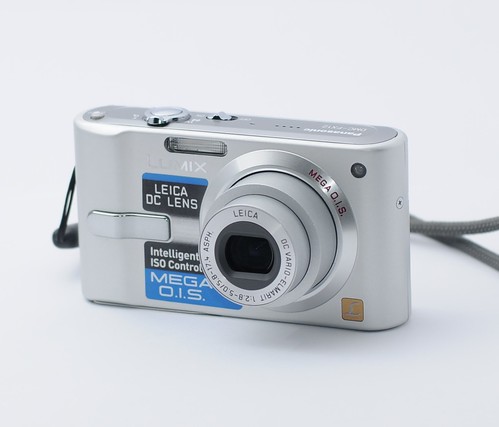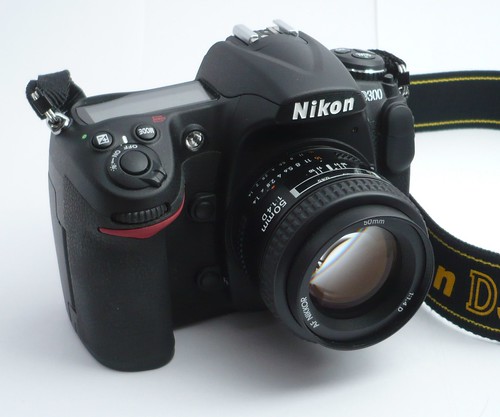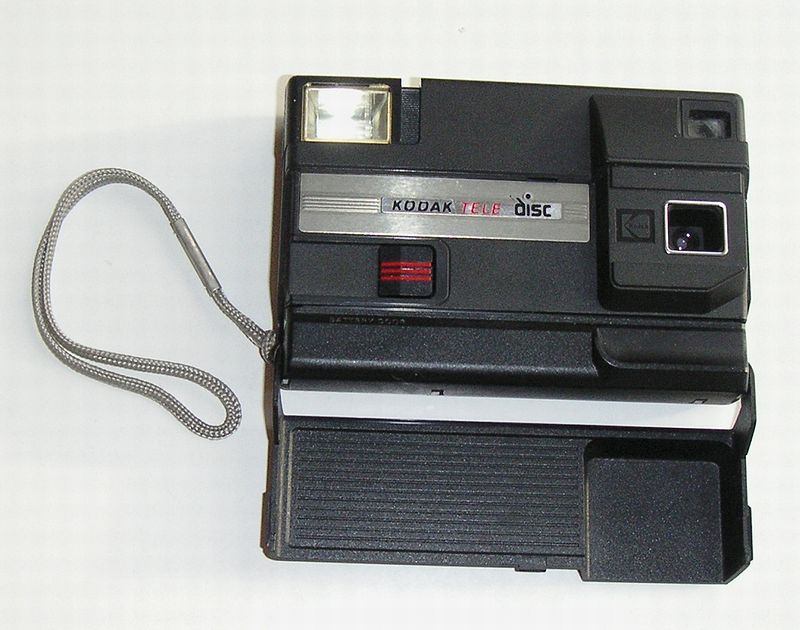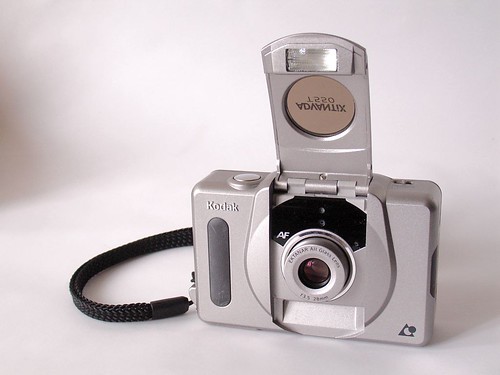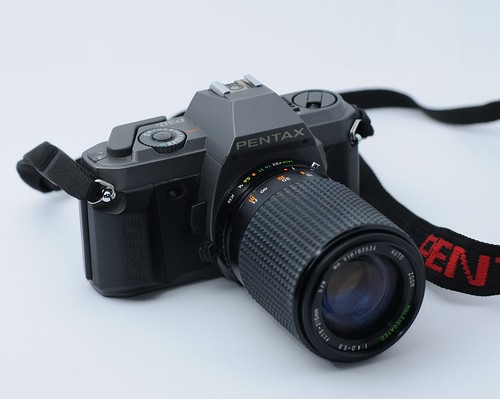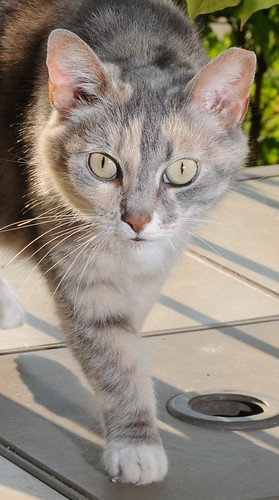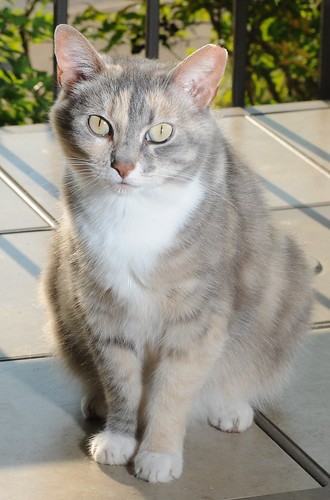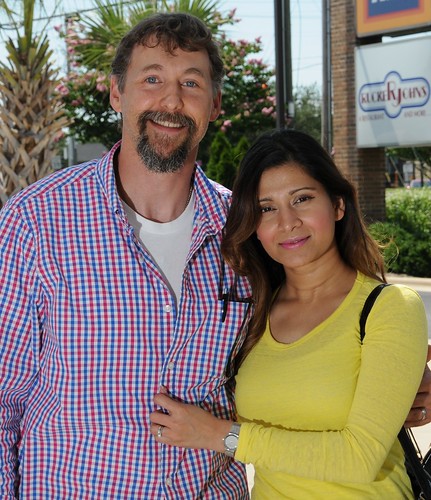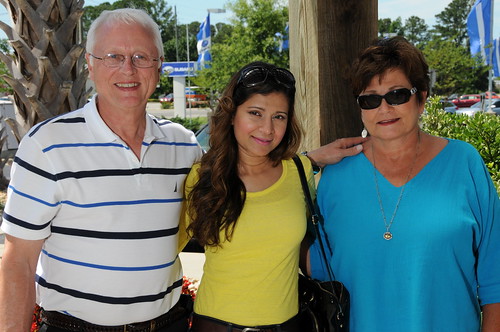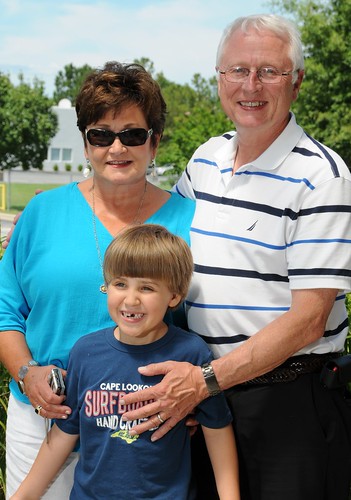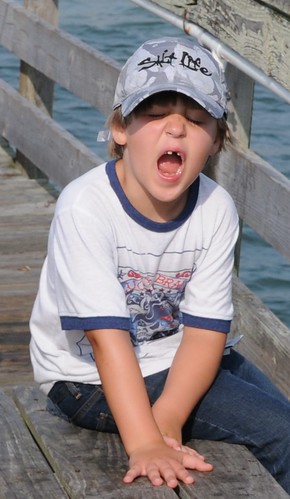 |
| shot at 48mm, ISO 200, f/11, 1/400th of a sec |
It happens to me all the time (if it makes you feel any better).
Look at Gavin...I can feel my blood pressure start to go up when I remember this day last week. His uncle, his grandaddy, and I took him fishing off of the Nags Head Fishing Pier. I--of course--wanted to take a couple of photographs while out there. So I hauled my camera along with my fishing pole and tackle box.
"Perfect", I thought. Little Bud was sitting on a bench just gazing out over the water. I called out to him to turn, look at me, and smile while I snapped a photo...and, well, you see what I got.
I swanny, the boy does it to spite his old man. So frustrating to say the least. Oh well. I smile now, but didn't then!
I know this has happened to you as well, in some form or fashion. Lesson learned: patience is a virtue. To be a photographer means to be a master in the art of waiting. Very rarely, do things fall into place right when you want them to. [This is one reason I have started the Camerawith! challenge (see here). You need to be ready all the time for those great shots when they do occur.]
So what did I do when Gavin gave me a smug face? I put my camera away for the time being. I thought to myself..."I'll get him later". I forced myself to have a little patience. There is nothing worse than trying to get some pictures of someone (especially a child) who flat doesn't want their picture taken. It's just no fun for either person.
Ever heard the phase "pick your battles"? Yes, well I came to the conclusion that (for the rest of this day at least) I was not going to ask Gavin to "look at me and smile". I had something else in mind anyway.
 |
| 56mm, ISO 200, f/5, 1/15th sec. Strobe camera left at 1/100th pwr |
He was quietly sitting in the bedroom playing on his Nintendo DS in his own little world. I decided this was my chance to get in close. He paid me no mind as I sat down just a couple feet from him, which was what I wanted.
The lighting in the room was good, but not good enough. I selected a slow shutter speed to keep all the ambient light at a natural level. Then I added my own light with my off-camera flash (strobe). Set off to the left at floor level and adjusted to 1/100th power (that's not much...only 1% of its capability), this gave me just the right lighting balance. [For more on balancing or leveraging light, see my post "Make Ambient Light Work For You" here.]
I'd like to mention...there are huge advantages to photographing someone in their natural state. Namely, you can take your time getting all situated and set up, and get your camera settings and lighting just right. You can get a perfect shot without the pressure. You are not stressed, and they are not trying to "hold" a smile.
Click! Pretty nice shot I must admit. I doubt he even remembered it. I smile as I type, because I won the battle :)
Try a little patience next time your young one is giving you a hard time. There is a reason photography and patience start with the same letter, I think they're kin folks.
Have you found yourself in a similar situation? If so, share. Leave a comment if you have time and give us a laugh.
Thank for reading!
Brant
Like it here? Resister your email for automatic updates up at the top. Please pass this blog post on to your friends (if you think they would like to read it) using the Tweet, Facebook, and Google+ buttons.

